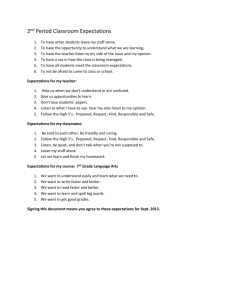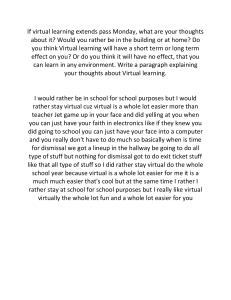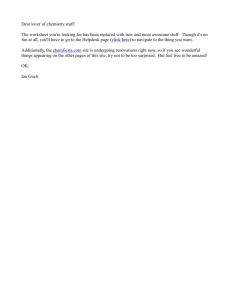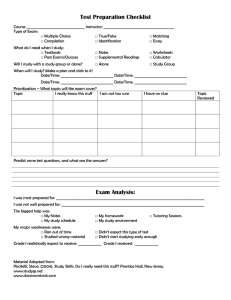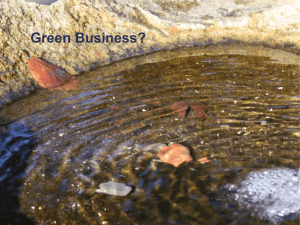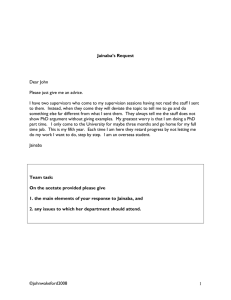What is Matter? - Odyssey Charter School
advertisement
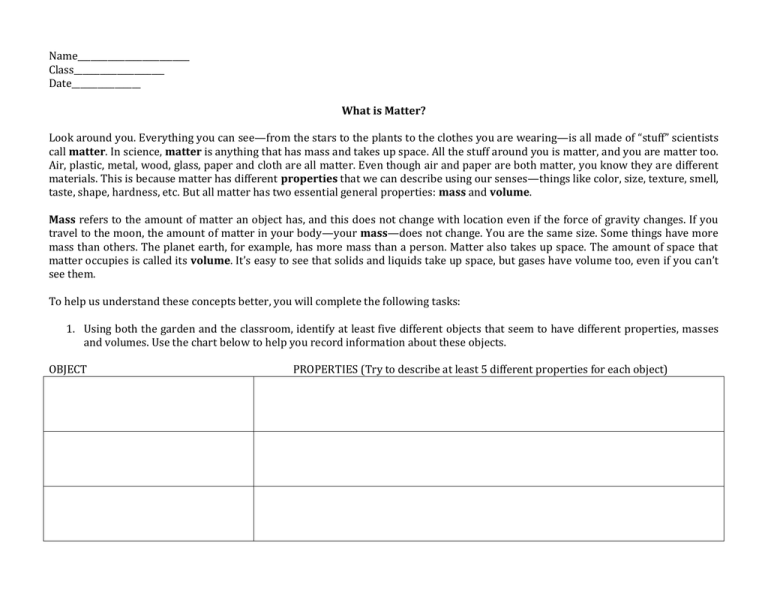
Name__________________________ Class_____________________ Date________________ What is Matter? Look around you. Everything you can see—from the stars to the plants to the clothes you are wearing—is all made of “stuff” scientists call matter. In science, matter is anything that has mass and takes up space. All the stuff around you is matter, and you are matter too. Air, plastic, metal, wood, glass, paper and cloth are all matter. Even though air and paper are both matter, you know they are different materials. This is because matter has different properties that we can describe using our senses—things like color, size, texture, smell, taste, shape, hardness, etc. But all matter has two essential general properties: mass and volume. Mass refers to the amount of matter an object has, and this does not change with location even if the force of gravity changes. If you travel to the moon, the amount of matter in your body—your mass—does not change. You are the same size. Some things have more mass than others. The planet earth, for example, has more mass than a person. Matter also takes up space. The amount of space that matter occupies is called its volume. It’s easy to see that solids and liquids take up space, but gases have volume too, even if you can’t see them. To help us understand these concepts better, you will complete the following tasks: 1. Using both the garden and the classroom, identify at least five different objects that seem to have different properties, masses and volumes. Use the chart below to help you record information about these objects. OBJECT PROPERTIES (Try to describe at least 5 different properties for each object) 2. Which of your objects has more mass than the rest? ______________________________________ 3. How do you know? ___________________________________________________________________________________________________________________________________________________ ___________________________________________________________________________________________________________________________________________________ 4. Which of your objects appears to have more volume than the rest? _________________________________ 5. Will objects of larger mass always have more volume than objects of smaller mass? (Before you answer, think about the difference between a Styrofoam ice chest and an iron ball. One has more matter but less volume) ___________________________________________________________________________________________________________________________________________________ ___________________________________________________________________________________________________________________________________________________ 6. How do you know? ___________________________________________________________________________________________________________________________________________________ ___________________________________________________________________________________________________________________________________________________ Review: Define the following terms: Matter______________________________________________________________________________________________________________________________________________ Mass_________________________________________________________________________________________________________________________________________________ Volume______________________________________________________________________________________________________________________________________________ Matter is described by its______________________________________________, which we can describe using our ____________________________.
